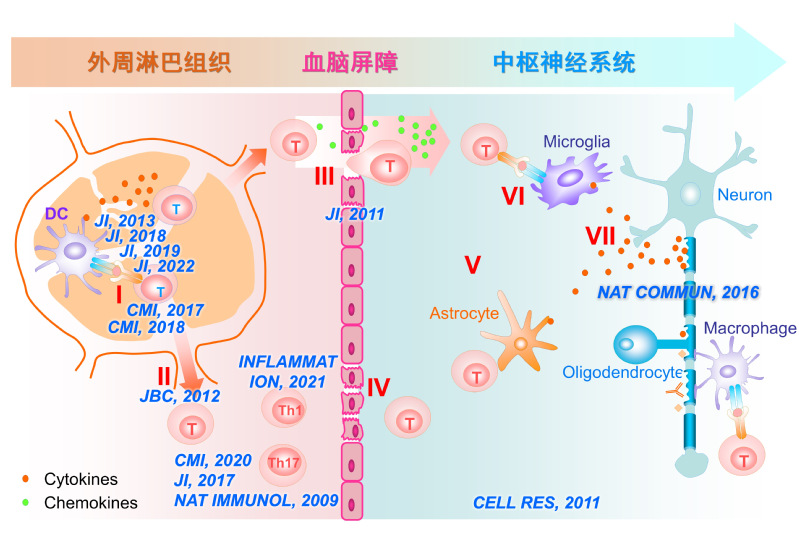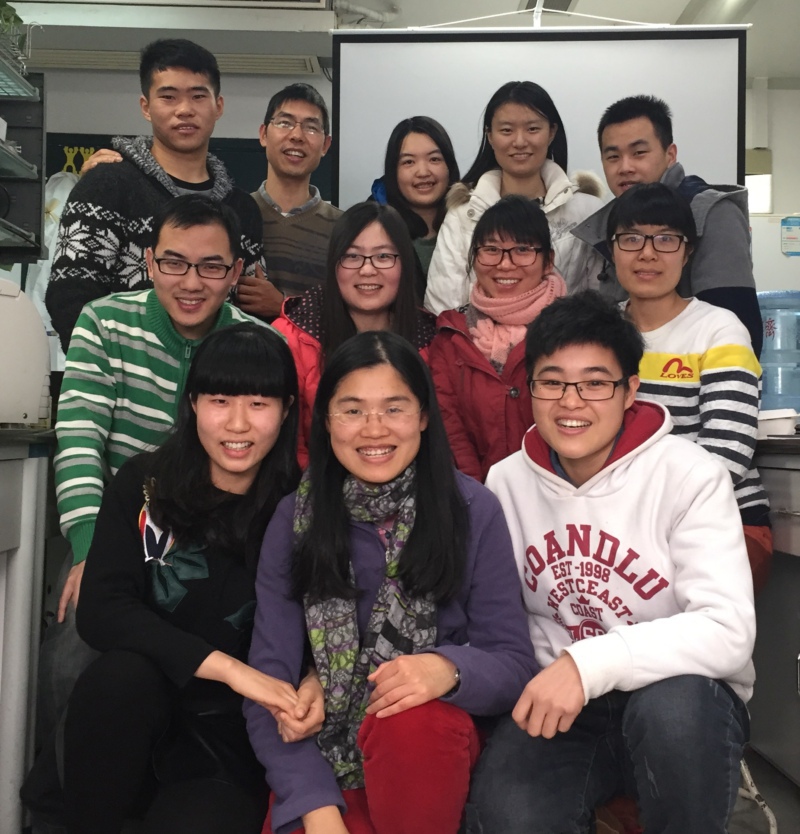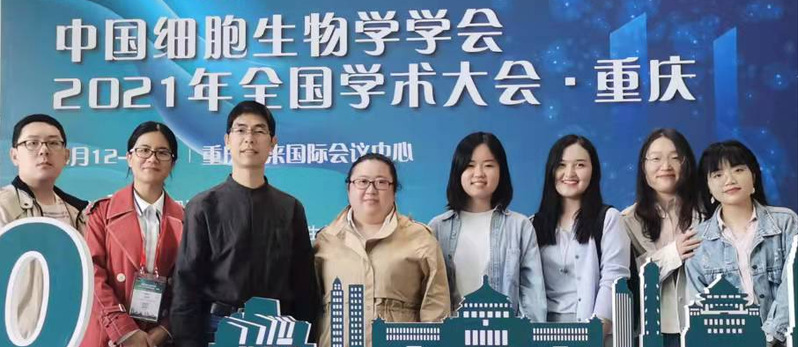Add: 50 Chifeng Road,
Medical Building,
200092,
Shanghai, China
Tel: 021 - 65981041
Fax: 021 - 65981041
Name:DU Changsheng

Gender:Male
Department: Molecular and cell biology
Position:Professor
E-mail:duchangsheng@tongji.edu.cn; ducs2015@163.com
Telephone:86-21-65982579
Address:1239 Siping Road, Tongji University, Shanghai, 200092, P.R. China
Education and Research Experiences
2016-present Professor, Principle Investigator,School of Life Sciences and Technology, Tongji University, Shanghai, P.R. China.
2009 – 2016 Associate Professor, School of Life Sciences and Technology, Tongji University, Shanghai, P.R. China.
2005 – 2009 Postdoctoral studies in Cell Biology, Institute of Biochemistry and Cell Biology, Shanghai Institutes for Biological Sciences (SIBS), Chinese Academy of Sciences (CAS), Shanghai, P.R. China
2002 – 2005 PhD in Virology, Institute of Hydrobiology, CAS, Wuhan, P.R. China
1999 – 2002 M.S. in Cell Biology, Central China Normal University, Wuhan, P.R. China
1995 – 1999 B.S. in Biology, Hubei Normal University, Huangshi, P.R. China
Research Interests and Findings
Multiple sclerosis (MS) is an autoimmune disease with repeated attacks and progressive disease severity, most people are diagnosed between the ages of 20-40. There is no effective therapeutic drug for MS at present which exhausted the patients and the family members. The main causes for these difficulties were
the unknown disease mechanisms and the lack of effective drug targets for MS. Our research focus on studying disease pathogenesis of MS and exploring drug targets for disease treatment, finally to propose a multiple targets orientated therapeutic strategy for MS treatment in the future. During the past years, we revealed the important regulatory function of microRNA (miR-326) and G protein-coupled receptors (GPCR: Opioid receptors, cysLT1, A2B, P2Y12 and BLT1) in MS pathogenesis. These findings were published as first author or corresponding author in the peer reviewed journals including Nat Immunol, Nat Commun, J Immunol, Cell Res, JBC, CMI which attracted great interests of colleagues from all over the world, and were given comments in Nat Immunol, Nature China, Faculty of 1000. And our findings were selected as “Editors’ choice” and “Editors’ Pick” by Science Signaling and MS Discovery Forum respectively.

Figure 1. Cell mechanisms involved in the pathogenesis of MS/EAE
and our contributions listed in【Cell Res, 2012】
(I) T-cell activation.【We revealed the critical roles of A2B receptor and Gaq in regulation of IL-6 production by dendritic cells (DC), J Immunol, 2013;CMI,2017;We discovered the small molecule BVDU as the modulator of IL-6 production by DC,J Immunol, 2017】;
(II)T-cell egress from lymphoid tissues.【We revealed the regulation role of microRNA in Th17 differentiation and MS pathogenesis, Nat Immunol, 2009;Discovered the new usage of the old drug, VPA, in the new function of MS treatment, JBC, 2012】;
(III-IV)Migration and infiltration of inflammatory cells from the periphery to the CNS and BBB integrity maintenance. 【We demonstrated the regulation of T cell chemotaxis and migration by leukotriene receptor cysLT1, J Immunol, 2011】
(V-VI) Astrocyte activation and microglia activation;
(VII)Demyelination and neurotoxicity. 【We revealed the critical roles of Kappa opioid receptor in regulating of MS/EAE pathogenesis and oligodendrocyte-mediated remyelination, Nat Commun, 2016】

Figure 2. Du-lab Group Photo@2016-01

Figure 3.Du-lab at Chongqing@2021-04
Publications:
1.Liu G*, Zhang Y*, Han S, Zhuang W, Lv J, Han M, Xie L, Jiang X, Wang C, Saimaier K, Shen J, and Du C#. TPN10466 ameliorates Concanavalin A-induced autoimmune hepatitis in mice via inhibiting ERK/JNK/p38 signaling pathway. Eur J Immunol, 2023, 53: e2250100. DOI:10.1002/eji.202250100.
2.Wang C*, Lv J*, Zhu Q, Zhuang W, Xie L, Liu G, Saimaier K, Shi C, Hua Q, Yue R, and Du C#. Novel evaluation indicators of MOG35~55 induced experimental autoimmune encephalomyelitis in C57BL/6J mice. Immunobiology, 2023, 228: 152341.
3.Lv J, Han M, Xiang Z, Gong R, Shi C, Hua Q, Zhang R, Du C#. Chlorzoxazone Alleviates Experimental Autoimmune Encephalomyelitis via Inhibiting IL-6 Secretion of Dendritic Cells. J Immunol, 2022, 208(7):1545–1553.
4.Wang C*, Lv J*, Zhuang W, Xie L, Liu G, Saimaier K, Han S, Shi C, Hua Q, Zhang R, Shi G#, Du C#. Induction and Diverse Assessment Indicators of Experimental Autoimmune Encephalomyelitis. JOVE, 2022, 187: e63866; DOI:10.3791/63866.
5.Liu G*, Yang J*, Han M, Lv J, Zhuang W, Xie L, Zhang Y, Wang C, Saimaier K, Yang J, Shen J#, Li N#, Du C#. Artemisinin derivative TPN10466 suppresses immune cell migration and Th1/Th17 differentiation to ameliorate disease severity in experimental autoimmune encephalomyelitis. Cell Immunol, 2022, 373:104500; doi.org/10.1016/j.cellimm.2022.104500.
6.Han M*, Li Y*, Huang Y, Wang G, Du C#, Wang Q#, Zhang G#. Integrated co-expression network analysis uncovers novel tissue-specific genes in major depressive disorder and bipolar disorder. Front Psychiatry, 2022, 13:980315; doi.org/10.3389/fpsyt.2022.980315.
7.Feng J, Zhu F, Ye D, Zhang Q, Guo X#, Du C#, Kang J#. Sin3a drives mesenchymal-to-epithelial transition through cooperating with Tet1 in somatic cell reprogramming. Stem Cell Res Ther, 2022, 13(29); doi: 10.1186/s13287-022-02707-4.
8.Wang C*, Yang J*, Xie L, Saimaier K, Zhuang W, Han M, Liu G, Lv J, Shi G, Li N#, Du C#. Methyl Butyrate Alleviates Experimental Autoimmune Encephalomyelitis and Regulates the Balance of Effector T Cells and Regulatory T Cells. Inflammation, 2022, 45: 977-991.
9.Xie L*, Saimaier K*, Wang C, Yang J, Han M, Lv J, Zhuang W, Liu G, Du C#. Methyl acetate arrests Th1 in peripheral immune system and alleviates CNS inflammation in EAE. Int Immunopharmacol, 2021:108291.
10.Lv J*, Zhuang W*, Zhang Y*, Xie L, Xiang Z, Zhao Q, Jiang X, Shen J#, Du C#. 9,10-Anhydrodehydroartemisinin Attenuates Experimental Autoimmune Encephalomyelitis by Inhibiting Th1 and Th17 Cell Differentiation. Inflammation, 2021, 44(5):1793-1802.
11.Yang C*, Lv J*, Jiang X*, Xiang Z, Gong R, Xing J, Liu G, Xie L, Saimaier K, Zhang Y, Wang J, Shen H, Pan J, Shen J#, Du C#. The novel small-molecule TPN10456 inhibits Th17 cell differentiation and protects against experimental autoimmune encephalomyelitis. Cell Mol Immunol, 2020, 17(12):1290-1293.
12.Cai Y*, Yang C*, Yu X, Qian J, Dai M, Wang Y, Qin C, Lai W, Chen S, Wang T, Zhou J, Ma N, Zhang Y, Zhang R, Shen N, Xie X, Du C#. Deficiency of beta-Arrestin 2 in Dendritic Cells Contributes to Autoimmune Diseases. J Immunol, 2019, 202(2):407-420.
13.Zhou J*, Lai W*, Yang W, Pan J, Shen H, Cai Y, Yang C, Ma N, Zhang Y, Zhang R, Xie X, Dong Z, Gao Y#, Du C#. BLT1 in dendritic cells promotes Th1/Th17 differentiation and its deficiency ameliorates TNBS-induced colitis. Cell Mol Immunol, 2018, 15(12):1047-1056.
14.Yang C, Lai W, Zhou J, Zheng X, Cai Y, Yang W, Xie S, Gao Y#, Du C#. Betaine Ameliorates Experimental Autoimmune Encephalomyelitis by Inhibiting Dendritic Cell-Derived IL-6 Production and Th17 Differentiation. J Immunol, 2018, 200(4):1316-1324.
15.Qin C*, Zhou J*, Gao Y*, Lai W, Yang C, Cai Y, Chen S, Du C#. Critical Role of P2Y12 Receptor in Regulation of Th17 Differentiation and Experimental Autoimmune Encephalomyelitis Pathogenesis. J Immunol, 2017, 199(1):72-81.
16.Lai W*, Cai Y*, Zhou J, Chen S, Qin C, Yang C, Liu J, Xie X, Du C#. Deficiency of the G protein Galphaq ameliorates experimental autoimmune encephalomyelitis with impaired DC-derived IL-6 production and Th17 differentiation. Cell Mol Immunol, 2017, 14(6):557-567.
17.Cai Y, Shen H, Qin C, Zhou J, Lai W, Pan J#, Du C#. The Spatio-Temporal Expression Profiles of CD4+ T Cell Differentiation and Function-Related Genes During EAE Pathogenesis. Inflammation, 2017, 40(1):195-204.
18.Du C*, Duan Y*, Wei W, Cai Y, Chai H, Lv J, Du X, Zhu J, Xie X#. Kappa opioid receptor activation alleviates experimental autoimmune encephalomyelitis and promotes oligodendrocyte-mediated remyelination. Nat Commun, 2016, 7:11120.
19.Du C, Xie X#. G protein-coupled receptors as therapeutic targets for multiple sclerosis. Cell Res, 2012, 22(7):1108-1128.
20.Du C*, Liu C*, Kang J, Zhao G, Ye Z, Huang S, Li Z, Wu Z, Pei G#. MicroRNA miR-326 regulates TH-17 differentiation and is associated with the pathogenesis of multiple sclerosis. Nat Immunol, 2009, 10(12):1252-1259.
* Equal contributions; # Corresponding author
Opportunities for International collaboration
We warmly welcome candidates who are interested in Biological Sciences to join us to pursuing your Master’s degree, PhD, or Postdoctoral research.
Our group is also keen to foster and grow international collaboration focused on the following area:
l Gene regulation network of T helper cell lineage development.
l The function of G-protein coupled receptors (GPCR) in T helper cells differentiation and autoimmune diseases pathogenesis.
l Screening of GPCR as targets for autoimmune diseases and neurodegenerative disease therapy.
l And we also welcome, other opportunities for collaborations with foreign organizations. These collaborations can be at an institutional, group or individual level. If your organization wishes to establish collaboration programs with us, we would be tremendously appreciative if you could email us your proposal with all the pertinent details (duchangsheng@tongji.edu.cn; ducs2015@163.com; 86-21-65982579).
Last modified: Monday, Apr 17th, 2023